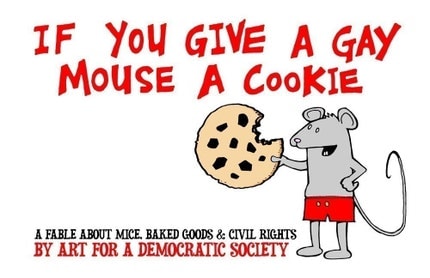 [Above: "Equal Rights for All" by Q]
[Above: "Equal Rights for All" by Q]The MAKING CHANGE Etsy team is for artists committed to activism. Please tell us what issues are important to you.
-This is a pretty tough question to answer concisely as there are many issues that are important to me and there are also issues that I'm not knowledgeable of that I find that are still important. My utmost concern are the social issues. Poverty, race relations and perceptions especially when it concerns with government and law, immigration reform etc. I find that my need to make all things as fair as possible makes me more passionate about social issues than say...the foreign wars this country is active in or that of environmental issues.
How is the idea of activism apparent in your art?
 There are two methods in which I try to convey activism with my photography. A lot of the times, I'll make the subject matter of my photography outright and out there so that the viewer knows what it is I'm actually trying to convey. With this method, I'm pretty much going with the photojournalist's perspective of getting the shot. No cloud, confusion or gray area. Then there are times when I take a subtle approach. These come few and far between because they're the hardest to successfully accomplish. I'm quite fond of these works because I feel that I can engage a viewer into thinking about the issue more and hopefully change their minds, should their views on the subject be different from mine.
There are two methods in which I try to convey activism with my photography. A lot of the times, I'll make the subject matter of my photography outright and out there so that the viewer knows what it is I'm actually trying to convey. With this method, I'm pretty much going with the photojournalist's perspective of getting the shot. No cloud, confusion or gray area. Then there are times when I take a subtle approach. These come few and far between because they're the hardest to successfully accomplish. I'm quite fond of these works because I feel that I can engage a viewer into thinking about the issue more and hopefully change their minds, should their views on the subject be different from mine.[left: "Sold on the Dream" by Q]
Do you think political and environmental issues can be effectively addressed in art?
Emphatically yes! There are so many great artists out there who are successful in getting the message out...either the artists' own or the issue at hand. One name that comes to mind is Shepard Fairey. His whole Obey propaganda has influenced me a great deal and has helped build my social activism and I'm quite sure many others out there have been influenced by his work. What's so great about him, and many other street art and street artists out there is that their work is accessible to everyone because they're readily available out on the streets and not solely in art galleries. Street art is a great medium in which to spread a message or idea/issues out. On the other side of the coin though, it's a sad thing to find that many works are overlooked because the general consensus is that such works are the works of vandals or plain graffiti. I beg to differ though. This is the people's art.
Which artists do you admire who have an activist agenda?
Well, because I've already named Shepard, I can't really use him for this one huh, lol. So, other than him, I'm also a big fan of Estevan Oriol's work although to be honest, I'm not quite sure if some of his works are overtly political. I would like to think that said works, are in the very least, subversively political. How can it not be? Even if it is unintended, I find that a lot of his street photography, and his photographs of the many gang members he's taken, speaks about many of the social issues that I myself try to show the world.

[right: "No to H8" by Q]
Tell us something about your process of creating.
My process of creating is that...I have none. I probably shouldn't have said that but I'm being honest. I'm always with a camera or two and when I go out, I go out to capture the world in all its beauty. As sad and as heart wrenching as some of some of these social issues can get, I find a certain beauty to them because in the end, it really is just a beautiful struggle. Take that however you want to take it. I just try my best to capture while at the same time being fair and honest if that makes any sense.
What is the name of your etsy shop?
The name of my store is PhotographyofQ. I'm still working on a series of photos called "A Beautiful Struggle" that deals with social issues and as far as I'm concerned, it'll always be a work in progress...






